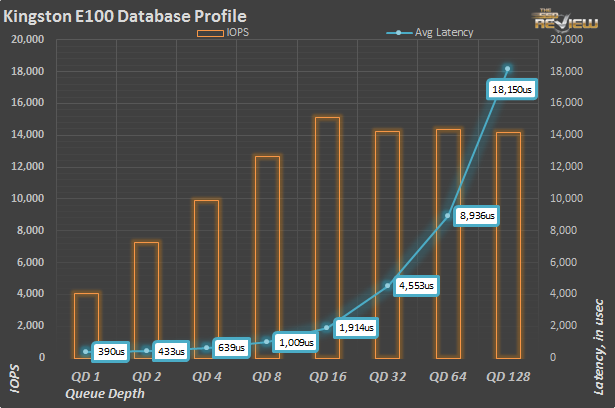SERVER PROFILES
As long as storage systems have been around, their users and managers have always wanted to know how they’d perform under approximate test conditions. If the system is going to be used for email, how does it do with a simulated workload? There are several simulated workloads that are representative of common workloads; database performance, fileserver, and so on. But before we log any results, we first have to run the workload until performance stops rising and falling over time. Once that’s done, we can test the server profile at QD1 through QD128.
The Kingston peaks at 17,000 IOPS at QD 16. The database profile is 8K transfers, and 67% percent are read operations.
The exchange server profile is 68% read and 32% write, composed of only 32K transfers. It is similar in terms of read write mix to the database profile, but the primary transfer size 32K is four times larger.
The E100 manages just 4,000 IOPS here, but that’s the same amount of throughput at the database profile, just north of 125MB/s.
The fileserver profile is an 80% read 20% write mix. It’s made up of blocksizes from 512 to 64K, each making up a different percentage of the access pattern.
The pattern is: 512 bytes=10%, 1k=5%,2k=5%, 4k=60%, 8k=2%, 16k=4%, 32k=4%, 64k=10%.
The webserver profile is similar to the fileserver profile, but has some additional 128K and 512K accesses thrown in.
 The SSD Review The Worlds Dedicated SSD Education and Review Resource |
The SSD Review The Worlds Dedicated SSD Education and Review Resource | 

